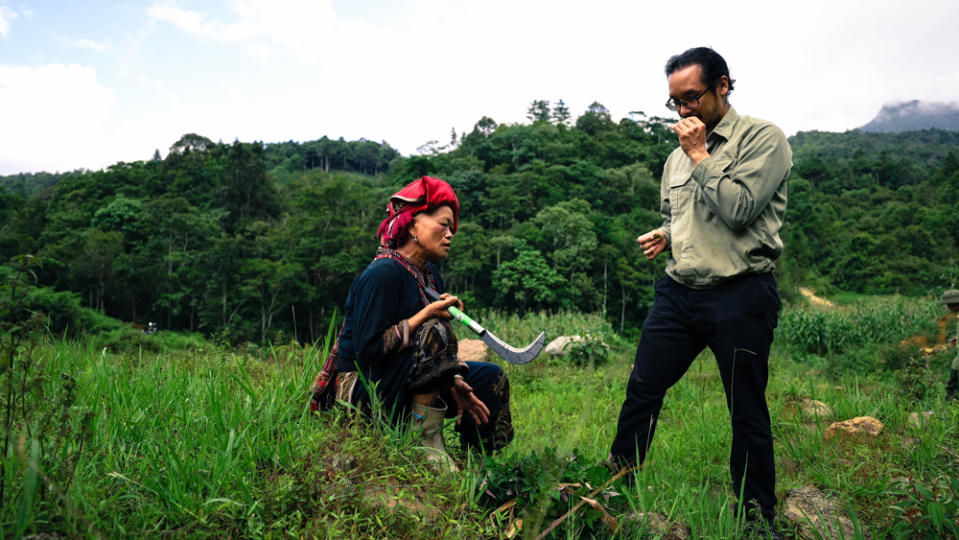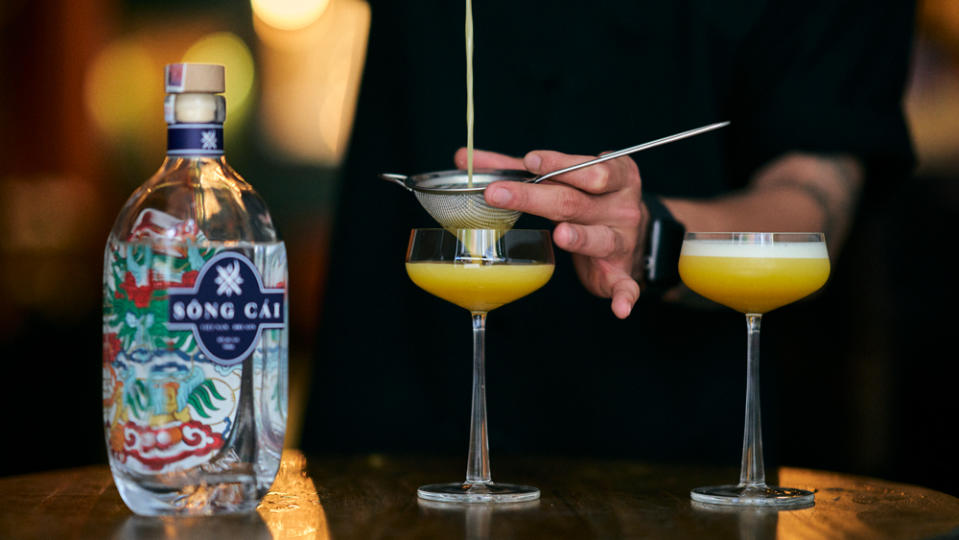One of the World’s First Vietnamese Gins Evokes the Country’s Flavors and Terroir

Dragon claw flower, ancient tinctures and wild mắc mật are just a few of the flavor inspirations behind the world’s first-ever Vietnamese gins—Sông Cái Dry Gin and Sông Cái Floral Gin. Sông Cái founder Daniel Nguyen argues that gin “has typically lacked a sense of place, and we want Sông Cái to be a gin that evokes terroir, much like a wine from France’s Rhône Valley. When you taste our gins you not only enjoy exotic flavors but you get a true sense of Vietnam.”
Nguyen initially traveled to Vietnam as part of an Oxfam-led agricultural team advising on sustainable agricultural in the Mekong River Delta. “The idea of distilling dawned on me while foraging in the highlands of Vietnam, documenting native botanicals and working to understand their role in the livelihood of Vietnamese communities,” he says. During his research he encountered an active, but very local, distilling culture. “Distilling has always been a way to add value to agricultural crops, and I saw it as an extraordinary opportunity to tell the world the story of Vietnam through botanicals.”
More from Robb Report
How to Make a Ramos Gin Fizz, the World's Most Difficult, Supremely Delicious Cocktail
How to Make a Tuxedo No. 2, a Gin Martini With a Surprising Absinthe Accent
How to Make a Don't Give Up the Ship, the Gin Cocktail for When You Need Liquid Courage
Nguyen, whose parents are Vietnamese immigrants, set out to master ancient traditions around distilling, spending long days foraging with local families, learning from the native medicine women about the region’s philosophy behind creating harmony and balance through the hot and cold energies of the native plants.

Photo: courtesy Sông Cái Distillery
“They guided me on which roots and botanicals best balance taste between savory and bitter. Many of the botanicals in the dry gin are the same ones used in local Vietnamese tinctures, which are a bit like amaro,” Nguyen says. “Ultimately our gins are an amalgamation of Vietnam’s amazing biodiversity and ancient knowledge.” Indeed, the brand’s staff is 100 percent local and more than 60 percent of the distillery team are indigenous women.
His Sông Cái Việt Nam Dry Gin is a robust spice-forward spirit, quite unlike other dry gins. On the nose you’ll get that quintessential juniper berry note followed by hints of rose, lychee and honeyed citrus. The finish shows lingering threads of Szechuan peppercorn and darker earthy spice notes layered with cassia and smoked licorice. “It has a nice long finish,” Nguyen says, “and it does incredibly well in classic cocktails such as a Negroni or a gin and tonic.”
Sông Cái Việt Nam Floral Gin pays homage to Vietnam’s flower culture. According to Nguyen, the Vietnamese have small altars in their homes to honor family ancestors, altars which are typically adorned with perfumed flowers. “We selected five of Vietnam’s most aromatic flowers, prized for their perfumed qualities, to deliver a soft, rounded, fruitier gin with a palate of ripe cherries, jackfruit, hints of jasmine and citrus blossom woven into a creamier texture. I love this one with a Tom Collins, or a Ramos Gin Fizz.”
There will be much more to come from Sông Cái. They are currently aging their whiskies, which Nguyen explains are fermented from a collection of native heirloom grain varietals. “We worked with the locals to propagate five ancient strains, several of which are corn,” he says. “We crafted our whiskey from our own malted grains using different Vietnamese fermentation styles in creating our mash.”

Photo: courtesy Sông Cái Distillery
He’s also concocting a Vietnamese styled Amari as well as a rice wine, similar to sake. “Our rice wine is a bit different,” Nguyen says, “because our acidity levels are higher, ours tends to fall in the middle of a sake and a Chardonnay in terms of mouthfeel.” He’s also experimenting with fermentation as a developer of flavor. “That’s our next step. For the rice wine we use two types of native rice and we employ seven types of yeast and fungi in fermentation process, isolating local microbes to sleuth out flavors that are unique and special.”
Ultimately, explains Nguyen, building up this company is a way to not only showcase the distinct Vietnamese terroir, but also to support a sustainable economy for the rural communities of Vietnam. They recently launched a program that pays local farmers to propagate indigenous seedlings and plant them back into forest to keep the gin ingredients sustainable. “It’s a way to increase the livelihood of our local partners with long term goal of building a global brand that would represent Vietnam,” Nguyen says, “it’s our responsibility to help make an impact in right direction.”
Best of Robb Report
Why a Heritage Turkey Is the Best Thanksgiving Bird—and How to Get One
From Stogies to Lighters: The 13 Best Gifts for Cigar Smokers
The 10 Best Wines to Pair With Steak, From Cabernet to Malbec
Sign up for Robb Report's Newsletter. For the latest news, follow us on Facebook, Twitter, and Instagram.


